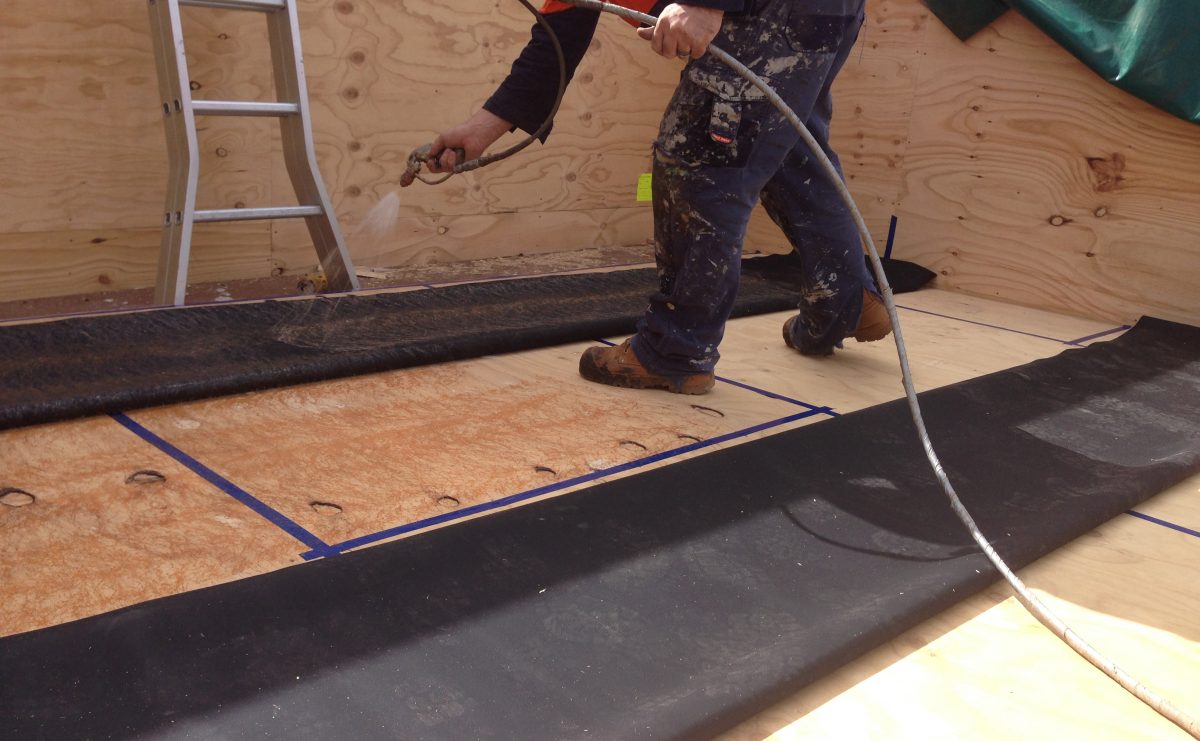Balcony waterproofing is one of the most common failure points in domestic waterproofing alongside bathrooms, and both can be exceedingly expensive to fix. You really only get one chance to get it right as fixing a problem at a later date requires removal of the trafficable surface – not the easiest thing to do where tiles are used.

As with any works, balcony waterproofing requires a well prepared, strong, and stable substrate. This substrate can vary from system to system, but a good rule of thumb is to provide a finish that you would be willing to tile to without the addition of any waterproofing.
The Waterproofers also request that no silicone or polyurethane is used on a balcony prior to us coming to apply the waterproof coating. We often find leak control flanges (floor wastes) have been fitted and edge sealed with silicone. This silicone can interfere with some systems and prevent us from performing our works. We understand that tradesmen want to try and achieve a watertight seal prior to leaving site, but these actions can sometimes render it impossible for us to provide a warrantable solution.
Balcony waterproofing can be achieved using almost any of the product ranges we typically apply. Different systems have different benefits and some special considerations when evaluating which solution is best suited to your project. Get in touch with us if you would like us to help you work out which solution should be used. We do recommend you avoid the use of torch-on bitumen membranes on a balcony. Although they are classed as a trafficable membrane system, they do not take well to traffic on warm to hot days. Softened bitumen is easy to damage and can transfer to your shoes and become trampled through you house.
Butyl Rubber Waterproofing
Butyl rubber is an ideal membrane for balcony waterproofing given it can be applied either under a screed or directly below most surface finishes. Butyl rubber waterproofing can be applied to most substrates providing they conform to a minimum specification including concrete, plywood, and cement sheet. In some cases an epoxy primer is required prior to the laying of the butyl rubber waterproofing membrane.
When using butyl rubber waterproofing under a screed you will still have to apply another waterproofing membrane to the screed once dried to avoid any moisture soaking the screed and/or efflorescence rising from the screed through the finished surface. This membrane can be another layer of butyl rubber or one of the many seamless liquid membranes available.
Another thing you should bear in mind when looking at using a butyl rubber is that it needs to be applied prior to the installation of door and window frames, and needs to be bonded to the building framework (or masonry) prior to the installation of any wall finishes. This is especially relevant with the rising use of light weight foam construction and is evidenced by the leaky homes crisis in New Zealand, also known as “leaky building syndrome”.
The final major consideration for butyl rubber balcony waterproofing is application of finish materials, be they tiles or other finishes. Butyl rubbers by their very nature are not easy materials to bond to and as a result most tile adhesives have serious problems creating an acceptable bond. It is best to discuss your finishing material with us when discussing your project.
Seamless Liquid Waterproofing
Balcony waterproofing using a liquid system is slightly less forgiving that using a butyl rubber system but can be performed later in the construction phase minimising the opportunity for damage. The substrate should be prepared and ready to accept the finishing product, and in some cases epoxy primers may have to be applied in place of the standard primers.
Unlike butyl rubber, balcony waterproofing using a liquid should have door frames and wall cladding in place. Flashings should be in securely fastened behind cladding and be well exposed onto the balcony floor where the membrane is not encapsulating the full wall.
Liquid waterproofing systems can also accept a wider range of adhesives when it comes to final finishes. Again, these should be discussed prior to work commencement to ensure compatible products are used.
There are also some liquid membrane systems for balcony waterproofing which provide both a watertight seal and a trafficable finish in a single system. These systems are especially useful where weight considerations are of extreme importance or costs need to be contained.